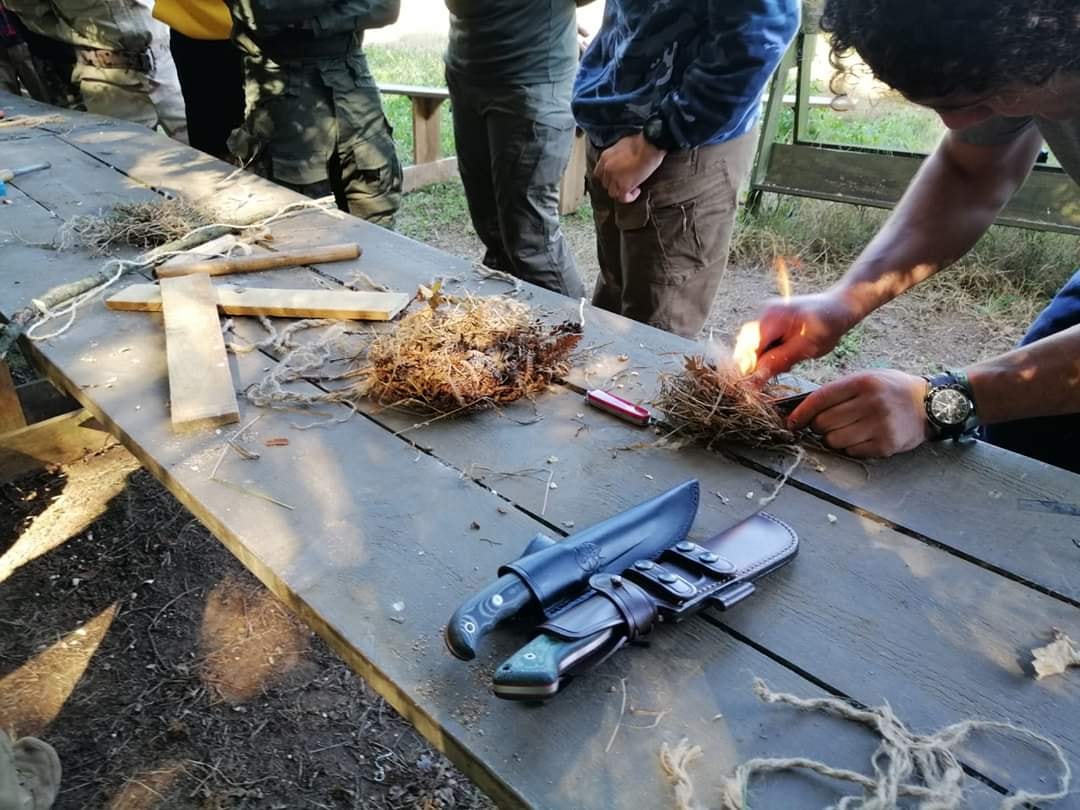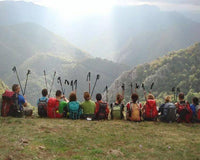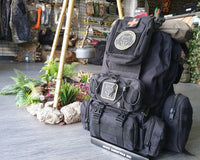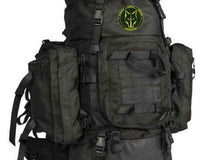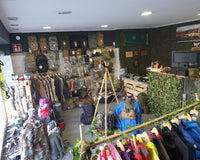Ferrocerium, flint, magnesium, carbide, fire starter. All of these are useful elements for starting a fire in an emergency situation or when a lighter or similar item isn't available.
In this article we will focus on the difference between ferrocerium and flint , since it is a fairly common mistake to refer to ferrocerium as flint.
There are many more elements to start a fire, such as charred cloth, fire roller, and exothermic reactions through the combination of chemical elements, but that will be the subject of another article.
What is a Ferrocerium?
A ferrocerium is usually the most common item we carry in our EDC or survival kit. Ferrocerium is a synthetic pyrophoric alloy that produces hot sparks that can reach temperatures of 3000°C (5430°F)

When the ferrocerium bar is scratched and small chips are produced, they are rapidly oxidized by the effect of oxygen in the air, producing these small incandescent flakes.
Ferrocerium was invented in 1903 by Austrian chemist Carl Auer von Welsbach. It takes its name from its two main components: iron (from the Latin ferrum) and the rare earth element cerium.

Ferrocerium or modern Firesteel is composed of an alloy of rare earth metals called mischmetal (containing about 20.8% iron, 41.8% cerium, about 4.4% each of praseodymium, neodymium, and magnesium, plus 24.2% lanthanum. (1)
What is a Flint?
Flint is a sedimentary rock composed primarily of amorphous (SiO4) or cryptocrystalline silica. It is a very compact type of flint. Because it is a heterogeneous material, it cannot be characterized as a mineral, but rather as a rock.
 image source wikipedia
image source wikipedia
It is generally found in black or dark shades of blue, gray, or brown, with a glassy appearance on fresh surfaces. It has a hardness of 7.0 on the Mohs scale. When struck with sufficient force, it shatters, forming a characteristic, irregular, wavy surface with numerous sharp corners or flakes. With practice and skill, it can be used to obtain sharp tools or cutting elements.
Hitting these types of rocks against carbon steel elements also produces sparks that we can use to light a fire.

Many times we see how ferrocerium is wrongly called “flint” we should not confuse the names.
In another article, we will discuss other elements for lighting fires, such as magnesium, the fire piston, the typical "chisqueiro," fire roller, etc.

(1) (Reinhardt, Klaus; Winkler, Herwig (2000). "Cerium Mischmetal, Cerium Alloys and Cerium Compounds". Ullmann's Encyclopedia of Industrial Chemistry. John Wiley & Sons. doi:10.1002/14356007.a06_139.)

